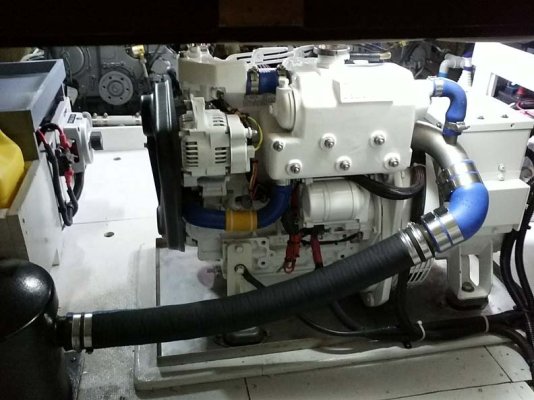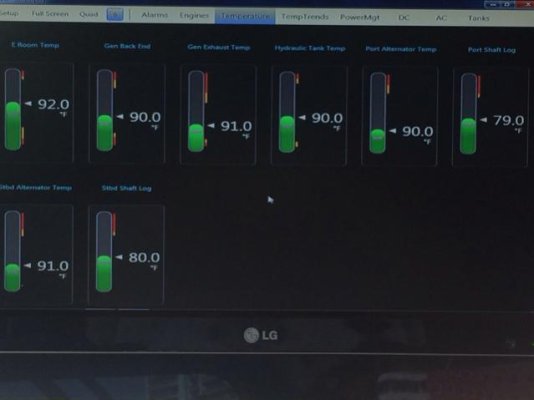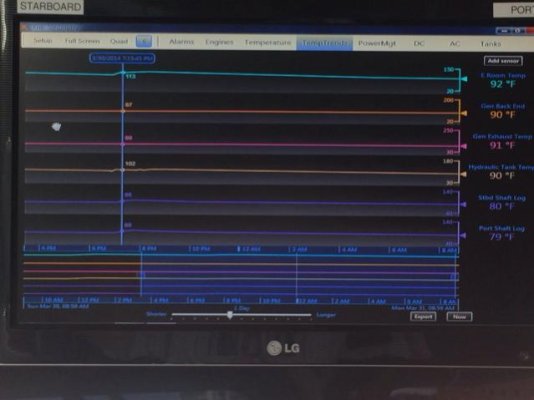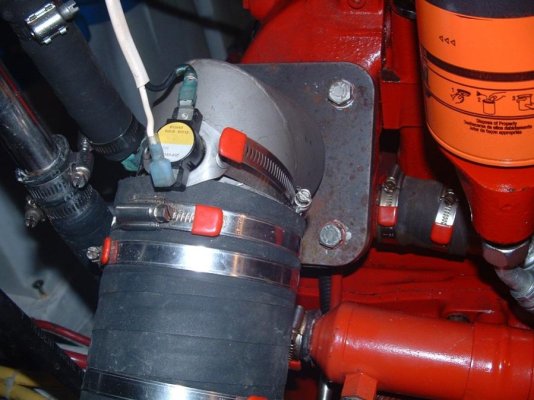Shoalwaters
Guru
- Joined
- Feb 24, 2008
- Messages
- 681
- Location
- St. Lucia, West Indies
- Vessel Name
- "Dragon Lady"
- Vessel Make
- DeFever 41
I want to fit gauges and/or alarms that will tell me if a mixing elbow is getting too hot. I am particularly concerned about the generator exhaust as it has a pretty blue silicone elbow just downstream of the seawater injection point (pic). Do you have such a monitoring system, and if so how does it perform? I seem to remember posts about using oven thermometers with remote gauges - any good?





